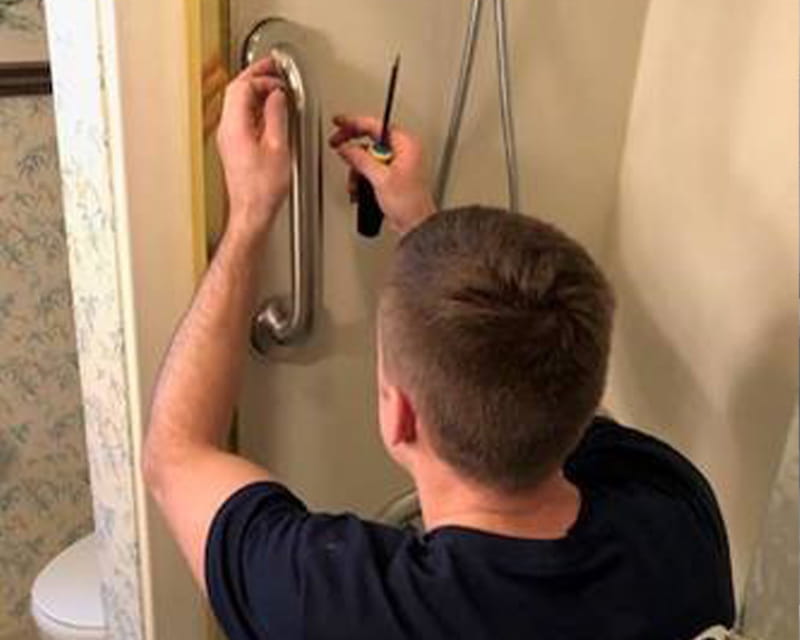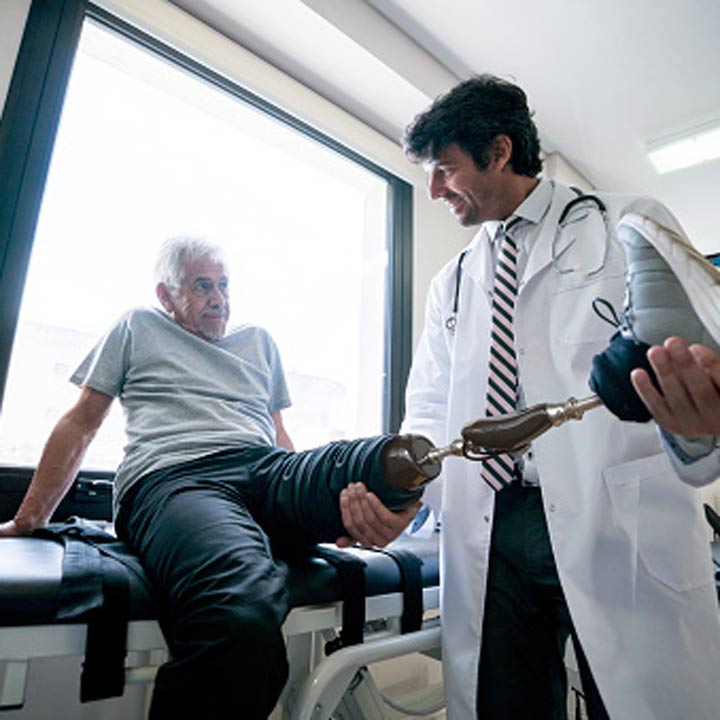
improving patient care
 Wounded service members, especially those with lower extremity injuries, often endure up to 10 procedures to reconstruct limbs or joints and relieve nerve pain.
Wounded service members, especially those with lower extremity injuries, often endure up to 10 procedures to reconstruct limbs or joints and relieve nerve pain.
The Department of Orthopaedics team at The Ohio State University Wexner Medical Center is working to expand offerings in the Military Medicine Program to improve care for patients with these complex injuries.
Alongside plastic surgeons, infectious disease specialists and vascular surgery experts, our orthopedic surgeons collaborate to provide the advanced care and all ancillary services injured military members need, says Douglas Chonko, DO, clinical associate professor of Orthopedics in the Ohio State College of Medicine.
“Many of these patients return from overseas wars and conflicts with complex injuries. They go back to hometowns without access to the expertise they need,” Dr. Chonko says. “We provide that specialty care.”
The orthoplastics program at the Ohio State Wexner Medical Center treats civilian and military patients with conditions including:
Many patients may present with more than one of these conditions.
“The premise of our program is to help these patients heal,” says Kevin Martin, DO, clinical associate professor of Orthopedics in the Ohio State College of Medicine.
Treatments include:
Lessons learned and advancements gained through military medicine also benefit civilian patients, especially as the population ages.
“We are seeing so many complexities with the increased number of cases and the overall volume of orthopedic joint procedures,” Dr. Chonko says.
The orthoplastics team translates orthopedic knowledge from the battlefield and military hospitals to academic medical centers and vice versa. Specialty surgeons in orthopedics and plastic surgery perform procedures concurrently to achieve the best results.
Many of our surgeons are also military veterans.
Jason Souza, MD, directs our Military Medicine Program. He’s a plastic surgeon specializing in restoring and reconstructing injured limbs and resolving complications after amputation and a clinical associate professor in the Department of Plastic and Reconstructive Surgery in the Ohio State College of Medicine. A Navy veteran, Dr. Souza spent six years caring for wounded service members at Walter Reed National Military Medical Center before coming to the Ohio State Wexner Medical Center in 2021. He understands the complexity of treating visible limb injuries and invisible nerve pain that patients often experience.
The Ohio State Wexner Medical Center is staffed by the only all-military foot and ankle division in the nation. Dr. Martin and Adam Groth, MD, are both Army veterans who served as lieutenant colonels. Both physicians also received the Bronze Star for their actions in combat.
“We are taking this expertise developed on the battlefield and looking at it more closely to see how we can advance it to address other needs,” Dr. Chonko says.
The spray foam splint, or Fast Cast, invented by Dr. Martin is one example. He discovered that spray polyurethane foam creates a stable cast in minutes for injuries on the battlefield.
Multiple tests and studies with cadavers have shown the spray foam splint keeps bones in line during rigorous movements, Dr. Martin says.
One test involved encasing fractured tibias in spray foam and applying movement sensors to the limbs. Emergency medical technicians then carried the cadavers up and down flights of stairs. Other studies used spray foam to immobilize cadaver spines that were then graded by spine surgeons.
Dr. Martin recently presented data about the use of spray foam to stabilize the cervical spine to the Society of Military Orthopaedic Surgeons. And before the end of the year, he hopes to receive a $2.5 million research grant from the Department of Defense to continue studying spray foam applications.
To further orthoplastics care in the future, the orthopedics team plans to launch a one-year orthoplastics fellowship. The fellowship would be open to surgeons who complete a five-year orthopedic surgery residency, Dr. Chonko says.
The program would be unique and would formalize an orthoplastics specialty to “address these types of complex orthopedic cases that include periprosthetic joint infections, soft tissue loss or fractured joints and complex revisions,” Dr. Chonko says.